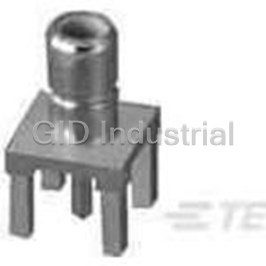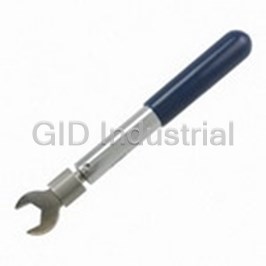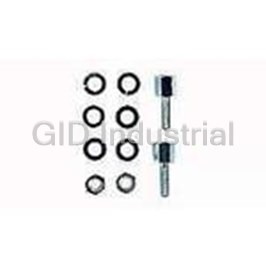TE CONNECTIVITY 58603-1
Specifications
Manufacturer
TE Connectivity
Manufacturers Part #
58603-1
Industry Aliases
58603-1
Sub-Category
Hardware Tools
Brand
AMP
Factory Pack Quantity
1
Datasheet
DDEController?Action=showdoc&DocId=Specification+Or+Standard%7F408-4342%7FA%7Fpdf%7FEnglish%7FENG_SS_408-4342_A.pdf
253 KiB
Extracted Text
7<=;>,=287#1..= ",%/)+.),’ --*00&+#*43)1( )&00&+#*4’".? >6>5*=2?.;*>6*$2<8;-.;<,*7;.<>5=/;86=1.9;85870.-><.8/6*7>*55B98@.;.-1*7-=885<*7-=885<*;.27=.7-.-/8;8,,*<287*5><.*7-58@?85>6. *9952,*=287<@2-.<.5.,=2878/98@.;.-*9952,*=287.:>296.7=/8;.A=.7-.-><.9;8->,=28789.;*=287<2<*?*25*+5. 8,*=8;<<.6+5B#=*=287*;B*@ #>9952.-@2=1 *,48/885$ 2.<<.6+5B &2;.#2-. ;87=8/885$885$*;4270 8,*=8;#2-.!2?8=!27 2.<<.6+5B !" "!"*7- 8?270*@ ;269270885$;*6. "*=,1.=-3><=6.7=&1..5 #=*=287*;B*7-5. $1.!" "!"*7-;269270885$2<*C866.;,2*50;*-.=885 *7-2<-.<207.-9;26*;25B/8;/2.5-27<=*55*=287;.9*2;6*27=.7*7,.@8;48; 9;8=8=B92702727-><=;2*5,866.;,2*58;27<=2=>=287*5*9952,*=287,= 8?270*7-5.,;269.-@2=1=12<=885@2556..==1.,;2691.201=;.:>2;.6.7=/8;1*7-=885<27=1. *99;89;2*=.*9952,*=287<9.,2/2,*=287+>=6*B78=,8695B@2=18=1.;/.*=>;. 9*;*6.=.;<8/=1.<9.,2/2,*=287B,8$5.,=;872,;9.;/8;6*7,.;.:>2;.6.7=<8;*--2=287*527/8;6*=287,87=*,==1. 885270$<<2<=*7,..7=.;*= )&00&+#*4-$"1-/00&+#*4-,1"$1"+)*!)5&++,02*)"1/).&,’1( 858;66(27)66(27) .558@’ >728;!8@.; 5>. 26.;26.;$$*7-*7- ()() 66*+$ ".- ;..7 #>9952.-@2=1-2.*<<.6+5B*5<8*?*25*+5.<.9*;*=.5B 87=*,==1.885270$<<2<=*7,..7=.;8;=1.!;8->,=7/8;6*=287.7=.;*==1.7>6+.;<52<=.-+.58@/8;<9.,2/2,,87=*,=9*;=7>6+.;< Figure 1 PRO–CRIMPER III Hand Crimping Tool Assembly 58603–1 consists of Die Assembly 58603–2 and PRO–CRIMPER III Hand Tool Frame 354940–1. The die assembly consists of crimping dies and a locator assembly. Reason for revision can be found in Section 11, Read these instructions thoroughly before crimping any contacts. REVISION SUMMARY. $###$$"$12<,87=;855.--8,>6.7=2<<>+3.,==8,1*70.B,8$5.,=;872,<8;98;*=287*;;2<+>;0!8/ 557=.;7*=287*5"201=<".<.;?.-!" %$$ "8;5*=.<=;.?2<287*7-".0287*5><=86.;#.;?2,. $5808*7-B,8$5.,=;872,<*;.=;*-.6*;4;@.+<2=.*=14$-&*&$1/-,)$0$-+333 ;*-.6*;4$ =1.;9;8->,=<5808<*7-,869*7B7*6.<><.-*;.=1.9;89.;=B8/=1.2;;.<9.,=2?.8@7.;< )/& & )#%(#&"’’$**!%$+ !%!# !!# $$) &% % $ $&%! # #"# ##"# $% ! % # ’#( !#%% # $&%! ’ #( Figure 2 screw just enough to hold the dies in place. Do not&#$ tighten the screw completely at this time. The tool features a tool frame with a stationary jaw 5. Place the wire crimper and insulation crimper so and handle, a moving jaw, a moving handle, and an that their chamfered sides and their marked adjustable ratchet that ensures full contact crimping. surfaces face outward, when mounted in the The tool frame holds a die assembly with four crimping sections. stationary jaw of the tool frame. 6. Insert the two die retaining pins. The die assembly features a wire anvil, an insulation anvil, a wire crimper, and an insulation crimper. 7. Insert the long die retaining screw through the jaw and through both crimper dies, and tighten the Attached to the outside of the tool frame is a locator screw just enough to hold the dies in place. Do not assembly, which contains a locator, a spring retainer, tighten the screw completely at this time. and a contact support. 8. Carefully close the tool handles, making sure Die retaining pins and die retaining screws are used that the anvils and crimpers align properly. to position and secure the dies in the tool frame. A Continue closing the tool handles until the ratchet nut is used on the long die retaining screw to hold the in the tool frame has engaged sufficiently to hold locator assembly in place. the anvils and crimpers in place, then tighten both die retaining screws. 9. Place the locator assembly over the end of the &# long die retaining screw, and position the locator assembly against the side of the tool jaw. 1. Open the tool handles and remove the two die retaining screws from the tool jaws. 10. Place the nut onto the end of the long screw and tighten the nut enough to hold the locator 2. Place the wire anvil and insulation anvil so that assembly in place, while still allowing the locator to their chamfered sides and their marked surfaces slide up and down. face outward, when mounted in the moving jaw of the tool frame. 11. To disassemble, close the tool handles until the ratchet releases, remove the nut, locator assembly, 3. Insert the two die retaining pins. the two die retaining screws, and the four die 4. Insert the short die retaining screw through the retaining pins, and slide the anvils and crimpers out jaw and through both anvil dies, and tighten the of the tool jaws. !)!%#! $!#"!#%! ’ %("$’"%!&&#)) $#+ $!7. Remove and inspect the contact. 8. Make another sample crimp. If the contact is &%**)+’’&(* )’()*’( &(*&) ’$%* straight, tighten the contact support screw. If the +*$ %&(!+)*$%*$.%))(. contact is still being bent during crimping, repeat the adjustment procedure. 1. Make a sample crimp and determine if the contact is straight, bending upward, or bending downward. )*&&# )’(&, - *( $’!+)*$%* *+(% * ##.*( $’ *)&+#2. If adjustment is required, loosen the screw that ,( ))’ % +((*&* &%holds the contact support onto the locator %* &%assembly. *&,( .( $’ *&(+) %**&&#*&( $’) ((**)*%*)**(*+ ## ") &%**))**&&#%#)(#&) Refer to the table in Figure 1 and select wire of the specified size and insulation diameter. Strip the wire to the length indicated in Figure 1, taking care not to 3. Place a contact with wire into the proper nest nick or cut wire strands. Select an applicable contact and close the tool handles until the ratchet reaches and identify the appropriate crimp section according the sixth click, or until the contact support touches to the wire size markings on the tool. Refer to the contact. Figure 3 and proceed as follows: 4. Slightly loosen the nut that holds the locator 1. Hold the tool so that the back (wire side) is assembly onto the tool frame. facing you. Squeeze tool handles together and 5. Move the contact support as required to allow them to open fully. eliminate the bending of the contact. 2. Holding the contact by the mating end, insert the 6. Tighten the nut and close the handles until the contact—insulation barrel first—through the front of ratchet releases. the tool and into the appropriate crimp section. ## $ !# &* ## #! ! $"## ## !&! #! #’ ## $ !# !#!! # # !"!# ## Figure 3 %’#!"! !# $.&1*-0*.(//,22’-%,5 3. Position the contact so that the mating end of the tool is considered dimensionally correct. If not, the contact is on the locator side of the tool, and so the tool must be adjusted. Refer to Section 7, that the open “U” of the wire and insulation barrels CRIMP HEIGHT ADJUSTMENT. must face the top of the tool. Place the contact up into the nest so that the movable locator drops into ),%-%)()%(- the slot in the contact. Refer to Figure 3. Butt the )("(-"+)# front end of the wire barrel against the movable %+"++"& locator. **),%-" "’ ")+(* *&* )!)&* !%)+#*!&%((# ()*(*,%#.!%*&* (!$’!%)*!&%& **$’**&(!$’%!$’(&’(#.’&)!*!&%2 )!%#%"!(/%& &%** 4. Hold the contact in position and squeeze the tool handles together until ratchet engages ! --$4/,/1$1+*.(sufficiently to hold the contact in position. Do NOT "# deform insulation barrel or wire barrel. "&&)0 5. Insert stripped wire into contact insulation and &." wire barrels until it is butted against the wire stop, as shown in Figure 3."! +""( 6. Holding the wire in place, squeeze tool handles together until ratchet releases. Allow tool handles Figure 4 to open and remove crimped contact. (!$’&%**$.)*!"!%* (!$’!% (+** &%**%)!#.($&,. ’+) !%&-%-(&%* *&’&* #&*&()1*-0’*()3%$.+" !+( 1. Remove the lockscrew from the ratchet adjustment wheel. 7. Check the contact crimp height as described in Section 6, CRIMP HEIGHT INSPECTION. If 2. With a screwdriver, adjust the ratchet wheel necessary, adjust the crimp height as described in from the locator side of the tool. Section 7, CRIMP HEIGHT ADJUSTMENT. 3. Observe the ratchet adjustment wheel. If a tighter crimp is required, rotate the adjustment wheel counterclockwise to a higher–numbered setting. If a looser crimp is required, rotate the This inspection requires the use of a micrometer with adjustment wheel clockwise to a lower–numbered a modified anvil. setting. .&#*(&%!)&)%&*$%+*+(&($("*4. Re–assemble the lockscrew. * )$!(&$*()&-,((&$$%)* 5. Make a sample crimp and measure the crimp$&!!$!(&$*((!$’! *&$’(*&( height. If the dimension is acceptable, replace and&(* !!*#$!(&$*((&$ secure the lockscrew. If the dimension is!*+*&.& unacceptable, continue to adjust the ratchet, and again measure a sample crimp. Proceed as follows: 1. Refer to Figure 4 and select a wire (maximum size) for each crimp section listed. Ensure that the tool and dies are clean by wiping 2. Refer to Section 5, CRIMPING PROCEDURE, them with a clean, soft cloth. Remove any debris with and crimp the contact(s) accordingly. a clean, soft brush. Do not use objects that could 3. Using a crimp height comparator, measure the damage the tool. When not in use, keep handles wire barrel crimp height as shown in Figure 4. If the closed to prevent objects from becoming lodged in crimp height conforms to that shown in the table, the crimping dies, and store in a clean, dry area. )#1 )&" -+)(% ,)+*)+-%)("/ %("$’"%!&&#)) $#* Customer–replaceable parts are shown in Figure 1. Available separately, PRO–CRIMPER III Hand Crimping Tool Repair Kit 679221–1 includes a replacement nut and a variety of pins, rings, screws, and springs. If the dies are damaged or worn excessively, they must be replaced. Order the repair kit and replaceable parts through your Tyco Electronics representative, or call 1–800–526–5142, or send a facsimile of your purchase order to 717–986–7605, or write to: CUSTOMER SERVICE (38–35) TYCO ELECTRONICS CORPORATION PO BOX 3608! HARRISBURG PA 17105–3608 Figure 5 Since the previous release of this instruction sheet, the following changes have been made: PRO–CRIMPER II Hand Tool became the The crimping dies should be inspected on a regular PRO–CRIMPER III Hand Tool; basis to ensure that they have not become worn or The TE logo was applied; and damaged. Inspect the crimp sections for flattened, The format was updated to the current chipped, worn, or broken areas. If damage or corporate requirements. abnormal wear is evident, the tool must be replaced. See Section 10, REPLACEMENT. !
Frequently asked questions
How does Electronics Finder differ from its competitors?

Is there a warranty for the 58603-1?

Which carrier will Electronics Finder use to ship my parts?

Can I buy parts from Electronics Finder if I am outside the USA?

Which payment methods does Electronics Finder accept?

Why buy from GID?

Quality
We are industry veterans who take pride in our work

Protection
Avoid the dangers of risky trading in the gray market

Access
Our network of suppliers is ready and at your disposal

Savings
Maintain legacy systems to prevent costly downtime

Speed
Time is of the essence, and we are respectful of yours



 Manufacturers
Manufacturers










What they say about us
FANTASTIC RESOURCE
One of our top priorities is maintaining our business with precision, and we are constantly looking for affiliates that can help us achieve our goal. With the aid of GID Industrial, our obsolete product management has never been more efficient. They have been a great resource to our company, and have quickly become a go-to supplier on our list!
Bucher Emhart Glass
EXCELLENT SERVICE
With our strict fundamentals and high expectations, we were surprised when we came across GID Industrial and their competitive pricing. When we approached them with our issue, they were incredibly confident in being able to provide us with a seamless solution at the best price for us. GID Industrial quickly understood our needs and provided us with excellent service, as well as fully tested product to ensure what we received would be the right fit for our company.
Fuji
HARD TO FIND A BETTER PROVIDER
Our company provides services to aid in the manufacture of technological products, such as semiconductors and flat panel displays, and often searching for distributors of obsolete product we require can waste time and money. Finding GID Industrial proved to be a great asset to our company, with cost effective solutions and superior knowledge on all of their materials, it’d be hard to find a better provider of obsolete or hard to find products.
Applied Materials
CONSISTENTLY DELIVERS QUALITY SOLUTIONS
Over the years, the equipment used in our company becomes discontinued, but they’re still of great use to us and our customers. Once these products are no longer available through the manufacturer, finding a reliable, quick supplier is a necessity, and luckily for us, GID Industrial has provided the most trustworthy, quality solutions to our obsolete component needs.
Nidec Vamco
TERRIFIC RESOURCE
This company has been a terrific help to us (I work for Trican Well Service) in sourcing the Micron Ram Memory we needed for our Siemens computers. Great service! And great pricing! I know when the product is shipping and when it will arrive, all the way through the ordering process.
Trican Well Service
GO TO SOURCE
When I can't find an obsolete part, I first call GID and they'll come up with my parts every time. Great customer service and follow up as well. Scott emails me from time to time to touch base and see if we're having trouble finding something.....which is often with our 25 yr old equipment.
ConAgra Foods